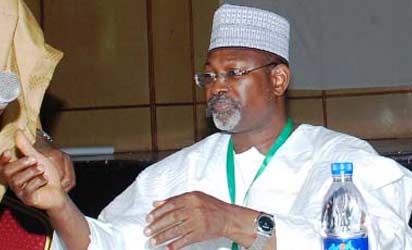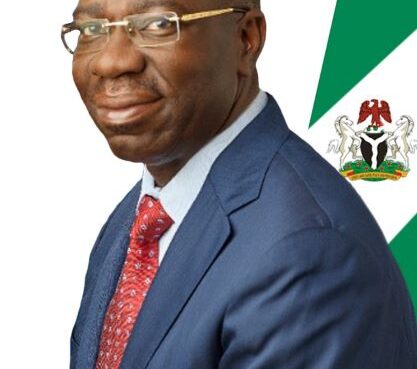• Algeria to push Nigeria to fifth position on nominal output
• GDP returns to 2007 level, closer to $1tr mark about 15 years ago than now
• Country faces potential reclassification as low-income economy
• CBN at crossroads over inflation, FX speculation, interest rate adjustment
• Cardoso holds his first MPC meeting
Nigeria would need to achieve accelerated growth and a firmer currency to regain and maintain a spot among the top three biggest economies in Africa.
Already, the country may have lost the top two spots to key rivals – Egypt and South Africa – as per output data released by the National Bureau of Statistics (NBS) last week.
Data by the International Monetary Fund (IMF) had picked Egypt to lead the African economy last year with a nominal GDP of $398.4 billion, a margin of 2.4 per cent higher than the estimated value of that of Nigeria, the hitherto regional leader.
Egypt is awaiting the full GDP figure for the 2023/2024 fiscal year, which runs its full cycle in June. In its 2022/2023 fiscal year, the North African country recorded a total output value of EGP10.2 trillion, an equivalent of $338.9 billion according to the current value relations between the Egyptian pound (EGP) and dollar.
Unlike naira, which has fallen by approximately 72 per cent of its value in the past year and close to 50 per cent year-to-date (YTD) alone, EGP has traded between EGP30 and EGP31.2 against the ‘greenback’ in the past year.
Like Nigeria, Egypt faces economic turmoil, manifesting in the wide spread between a parallel and official foreign exchange (FX) markets, tumbling reserves and sluggish growth. As a response to the FX crisis, the government asked undocumented immigrants to pay $1000 fines in dollars to regularise their residence status or face jail term next month.
This crisis leaves doubt on its ability to meet the growth projection that would push its economy to near $400 billion.
Still, Nigeria’s lacklustre performance might have narrowed the competition to a two-horse race – between Egypt and South Africa, another regional power that is battling with growth challenges.
Since Nigeria’s economy was rebased in 2009, the country has maintained a consistent economic lead, reflecting its size, resilience and natural endowment advantage edge ahead of its regional peers.
In 2022, its leadership gap narrowed significantly with GDP valued at $477.39 billion, while Egypt, with about half of Nigeria’s population size, recorded $476.75 billion. South Africa maintained $405.87 billion.
For the same currency depreciation crisis, the International Monetary Fund (IMF) projection for last year marked down the trio – Egypt, Nigeria and South Africa – to $398.4 billion, $390 billion and $380.9 billion respectively.
None of the economies has fully resolved the currency depreciation crisis that hit Africa since the end of COVID but EGP and Rand have been relatively stable in the past year. For instance, naira has averaged 70 per cent to the two regional currencies, emerging as the third worst-performing last year, after the Lebanese pound and the Argentine peso.
And so far, only Nigeria has released the 2023 full-year productivity statistics. At the current market price (otherwise known as nominal term), Nigeria recorded an absolute output value of N234.4 trillion in the year, which was about 16 per cent higher than the N202.4 billion posted in 2022.
However, the supposed improvement was wiped out by runaway and elevated inflation and naira depreciation. As at the close of last year, the country’s nominal GDP was kneecapped to about $275.76 billion – far below the economies of the country’s regional and structural peers.
Algeria, Ethiopia and Morocco, which sit on Africa’s top 10 table as fourth, fifth and sixth economies hit their projections for last year, the three countries would be ahead of Nigeria in terms of nominal output value.
But even in its 2022 assessment, Algeria’s $192 billion economy has surpassed Nigeria’s last year’s growth by as much as 32 per cent. Interestingly, Algeria only needs to retain its 2022 output level or grow marginally to push Nigeria to the fifth position (on strictly nominal growth rating) as its currency (Dinar) has held firmly against the dollar since the beginning of last year. The currency is one of the few net gainers against the United States dollar in the past 12 months.
Nigeria is even worse off in GDP per capita, which measures the quality of growth factoring in the population size. At the current exchange rate, the country has further gone down to $672 GDP per capita. The figure needs to be tripled to get the country to the level it is in 2022 and nine times the estimated South Africa’s size of GDP per capita for last year.
Only a few African countries – Burundi, Sierra Leone, South Sudan, Madagascar, Sudan, Central African Republic and Malawi – are worse off than Nigeria in terms of the current GDP per capita.
Other African countries to share a fence with Nigeria in GDP per capita, a metric that measures the poverty level of countries, are Eritrea, Niger, Mozambique, Democratic Republic of Congo and Chad. The likes of Chad, Mali, Somalia, Liberia and Gambia would be higher than Nigeria if they maintain their historical performances.
The World Bank, based on falling income, may downgrade Nigeria from lower-middle-income economies to low-income economies, which describe countries with less than gross national income (GNI) per capita of less than $1,085. Whereas GDP per capita does not equate to GNI, the two are closely related and positively correlated. GNI per capita is the total income received by the country from its residents and businesses regardless of whether they are in the country or abroad while GDP per capita is the value addition within an economy for a period divided by the country’s population.
In 2022 when Nigeria’s GDP per capita was $2,184, its GNI per capita was 2,140. Since GNI is partly a component of GDP, the figure is expected to trend downward with the GDP figures. Whereas countries exit or fall into low-income economies regularly, a rising low-skill population accentuated by less than 10 per cent school dropout rate, falling domestic investment, fast-growing population and troubled local currency are major odds against the country’s ability to rise above the low-income ranking.
A falling GDP is a harbinger of bad news for President Bola Tinubu whose ultimate economic target is to raise the output level to $1 trillion by 2030. The FX crisis has thrown the economy back to as far back as 2007, when the nominal GDP was valued at $169.65 billion. That suggests that the economy was closer to the ambitious $1 trillion mark about two decades ago than it is today.
How Nigeria gets off the quagmire, experts have suggested, would depend on how fast it mobilises both local and foreign investments into key growth areas such as road infrastructure, power, manufacturing and agriculture.
Sadly, the removal of the country from emerging market classification has raised the sovereign risk premium and kept foreign funds miles away from the economy. For instance, capital importation, which reached $24 billion at its peak in 2019, has remained abysmally low and falling since post-COVID-19. Last year, a total of $5 billion inflow or slightly above 50 per cent was what came in during the COVID-19 year.
The high inflation rate, volatile interest rate and the negative real rate on interest have been blamed for low investors’ apathy in the local economy. Participants at the Economists’ Conference at the weekend said the negative real rate of return was a major issue.
But Dr Ayo Teriba of Economics Associates said efforts to raise the income level in the post-industrial age would leave the economy in the lurch until the country begins to pay attention to expanding its balance by leveraging its stranded assets. The economist, a staunch of asset monetisation, said the country must begin to monetise its assets as a growth strategy.
There were also discussions on the role of interest rates in driving growth. Since May 2022, the Central Bank of Nigeria (CBN) has been on an aggressive monetary tightening as a key strategy to rein in inflation, raising the anchor rate from 11.5 per cent to 18.75 per cent in less than two years. But inflation has responded strangely, assuming a positive relationship with the interest rate – in contradiction to the trade-off in interest rate-inflation relations.
With inflation currently at 30 per cent, real return on investment remains in the negative territory – another challenge causing disincentive to investors. Fitch Ratings recently warned of the downside of high-interest rates on financial asset quality and how this could potentially trigger an increase in bad loans in the system. But the IMF expects the Monetary Policy Committee (MPC), which meets today – the first under Yemi Cardoso as the MPC Chairman and the CBN Governor – to raise the interest rate further.
A higher interest rate is seen as a strategic option to rein wild speculative tendencies in the FX market. Of course, stabilising FX and high inflation is crucial for restoring confidence in the short run. But the downside is the potential to raise the already unaffordable cost of funds, which will in the long run hit up prices.
Then, there is a question most economists have asked – to what extent is money responsible for the country’s inflation growth?
THEGUARDIAN






